An airline can be defined as a company that offers regular services for transporting passengers or goods via the air. These companies are said to comprise the airline industry, which is also regarded as a sub-sector of the aviation sector and the wider travel industry. In this post, you will learn everything you need to know about airlines.
Table of Contents:
- What is the Airline Industry?
- What is the Difference Between the Airline Industry and the Aviation Industry?
- What are the Different Types of Airlines?
- The Biggest Airline Companies in the World
- An Overview of All Airlines per Continent
- The 4 Most Important Business Models for Airlines
- Tips to Find a Job in The Airline Industry
- 1. Airline Jobs: List of Airlines to Find Your Next Job!
- 2. Airline Industry Job Boards for Finding Jobs Online
- 3. Recruitment Agencies for Aviation and Airline Industry Managers
- 4. Airline Industry: An Overview of the Main Airport Jobs
- 5. Job Description and Channels for Finding Airline Manager Jobs
- 6. Airline Industry: Tips for Finding Flight Attendant Jobs
- 7. Airline Careers: Different Positions in the Airline Industry
- 8. Airline Staff: How to Hire Staff for Your Airline
- 9. Recruitment Agencies for Aviation and Airline Industry Managers
- The Importance of Revenue Management Within the Airline Industry
- Popular Websites to Book Airline Tickets
- List of Platforms to Increase Bookings in the Travel Industry
- What Will Change the Airline Industry in the Upcoming Years?
- Travel Marketing Tips to Gain More Customers
- The Latest Technology Trends Within Travel
- The Latest Travel Trends
- Aerospace Companies and the Airline Industry
- The Value of Travel Software Packages
- Google Travel Insights: Tools and Data for the Airline Industry
- Other Related Industries
What Is the Airline Industry?
The airline industry encompasses various businesses, called airlines, which offer air transport services for paying customers or business partners. These air transport services are provided for both human travelers and cargo, and are most commonly offered via jets, although some airlines also use helicopters.
Airlines may offer scheduled and/or chartered services. The airline industry forms a key part of the wider travel industry, allowing customers to purchase flight seats and travel to different parts of the world. The airline industry offers a variety of career paths, including pilots, flight attendants, and ground crew. According to the Aviation report by Statista, the market size of the airline industry is $814.5 billion in 2023.
What Is the Difference Between the Airline Industry and the Aviation Industry?
The terms ‘airline industry’ and ‘aviation industry’ are sometimes considered synonymous, but in reality, they have different meanings. As stated, the airline industry refers to companies that offer air transport services to paying customers, whereas the aviation industry includes all aviation-related businesses.
With this in mind, the airline industry can be classed as just one sector of the wider aviation industry. In addition to this sector, aviation companies would include businesses like aircraft manufacturers, companies offering non-commercial flights, aerospace companies, regulation authorities, and those involved with research.
Table: Differences Between the Airline Industry and Aviation Industry
| Aspect of Comparison | Airline Industry | Aviation Industry |
|---|---|---|
| Primary Focus | The Airline industry primarily focuses on providing passenger transportation services. It revolves around the operation of scheduled flights that carry passengers from one destination to another. Airlines play a pivotal role in offering air travel as a means of transportation for individuals and tourists. | The Aviation industry encompasses a broader spectrum of activities beyond passenger services. It encompasses a wide array of operations, including the management and maintenance of airports, pilot and technician training, aircraft manufacturing, air traffic control, and various support services that are vital for the functioning of the aviation ecosystem. |
| Main Revenue Source | In the Airline industry, the primary source of revenue comes from ticket sales and passenger-related services. Airlines generate income through ticket bookings, seat reservations, baggage fees, in-flight services, and other passenger-centric offerings. | The Aviation industry derives revenue from a diverse range of sources. While passenger-related services contribute significantly, other revenue streams include airport fees, aircraft maintenance and servicing, aircraft sales, aviation training programs, air traffic management services, and various aviation-related products and technologies. |
| Key Operations | The core operations of the Airline industry revolve around the execution of scheduled flights. Airlines operate and manage aircraft fleets, flight schedules, passenger check-in, boarding, and in-flight services. They focus on ensuring passenger safety, comfort, and satisfaction throughout their journey. | The Aviation industry encompasses a wide spectrum of key operations. It includes the management and operation of airports, air traffic control systems, aircraft maintenance and repair, pilot and crew training, aircraft manufacturing, and research and development in aviation technologies. These operations collectively contribute to the safe and efficient functioning of the aviation sector. |
What are the Different Types of Airlines?
Airlines are often grouped into different categories, and precise definitions can vary in different parts of the world. However, broadly speaking, airlines can be separated into three main types, which are as follows:
1. International Airlines
International airlines are a group of the largest, most high-profile, and most successful airlines. They make billions in revenue each year and operate large passenger jets. These airlines also tend to focus their efforts on offering global services, carrying passengers and cargo over large distances.
Additionally, international airlines usually employ tens of thousands of people, often have multiple hubs, and will provide access to hundreds of destinations. Examples would include Delta Air Lines and American Airlines. According to the Air Travel Statistics 2023 Report by OAG, the largest airline in 2023 was Southwest, with a total of 619 billion Available Seat Kilometers (ASKs).
2. National Airlines
National airlines represent the next step down from the largest international airlines. They will typically offer both medium-sized and large-sized jets and will often focus on offering services to areas within their home country. Still, many will offer access to international destinations too.
A national airline will still likely employ thousands of people but will have a smaller fleet size. In many cases, the destinations they offer flights to are influenced by seasonal fluctuations in demand.
3. Regional Airlines
Finally, as the name suggests, regional airlines are the smallest of the three main types and focus on offering services within specific regions. In many cases, they provide passenger services to parts of the world with lower levels of demand and where services are not offered by either national or international airlines.
Some regional airlines also function as affiliates for national or international airlines. Within this context, they will typically provide connection flights from the region they cover to the airline’s main hubs.
The Biggest Airline Companies in the World
When it comes to identifying the largest airlines in the world, one of the most widely utilized metrics is Revenue Passenger Kilometers (RPKs). This information is published annually by the International Air Transport Association (IATA). As the name indicates, this metric is the sum total of the distances flown by each airline’s paying passengers over a year. With this in mind, the biggest airline companies in the world today are:
–
The biggest airline company in the airline industry is American Airlines. Founded in 1926, American Airlines is the largest airline in the world, not only according to the aforementioned RPK metric but also based on fleet size, total passengers, and number of destinations served. The company has its main headquarters in Fort Worth, Texas, flies to around 350 destinations, and handles 200 million annual passengers.
American Airlines’ largest hub is Dallas/Fort Worth International Airport, with more than 50 million passengers being served via this hub alone each year. The business also employs more than 100,000 people.
The second-largest airline company in the airline industry is Delta Airlines. Based in Atlanta, Georgia, in the USA, Delta Air Lines was established in 1925 and commenced passenger operations in 1929. The company employs over 80,000 people, operates over 5,000 daily flights, covers more than 300 destinations, and handles a region of 200 million passengers annually.
Delta Air Lines has nine hubs, including Atlanta Airport, New York-JFK, and Detroit Metropolitan Airport. It is also the second-largest airline in the world by fleet size, with more than 900 aircraft.
The third-largest airline company in the airline industry is United Airlines. United Airlines was founded in 1926 and started offering passenger services in 1931. The company is based in Chicago, Illinois, and offers flights to more than 300 destinations. United Airlines is ranked as the third-largest airline, not only by RPK but also by fleet size, with more than 750 Boeing or Airbus aircraft.
The airline has eight hubs, with Chicago–O’Hare Airport being the main one. United Airlines serves more than 150 million passengers annually and is a key Star Alliance member.
Another main airline company within the airline industry is Emirates, based in Dubai, in the United Arab Emirates. A state-owned airline, it started operations in 1985 and is also recognized as one of the largest airlines in the world for cargo activities. Emirates currently has a fleet size of more than 250 aircraft and is notable for not joining any major airline alliances.
It is estimated that Emirates provides flights for more than 50 million passengers annually and offers services to more than 150 destinations in total. The company’s sole hub is Dubai International Airport.
The fifth biggest airline company in the airline industry is Southwest Airlines. Established in 1967 and commencing with passenger airline services in 1971, Southwest Airlines is recognized as the largest low-cost carrier in the world, according to most metrics. It has more than 60,000 staff, operates with a more than 750 aircraft fleet, and carries more domestic passengers than any other US airline.
Unlike most other airlines on this list, Southwest Airlines does not have a main hub and relies on a point-to-point system. Most of its destinations are in North America and Central America.
The sixth biggest airline company in the airline industry is China Southern Airlines. China Southern Airlines was founded in 1988 and is the largest airline in Asia by fleet size, delivering its services through more than 600 aircraft. The company provides services to in excess of 200 destinations, carries around 150 million passengers each year, and employs somewhere in the region of 100,000 staff.
The airline’s two main hubs are Beijing Capital International Airport and Guangzhou Baiyun International Airport.
One more large airline company within the airline industry is Ryanair. Ryanair was Founded in 1984; Ryanair is based in Dublin, Ireland, and is recognized as one of the largest budget airlines in the world, providing flights for more than 100 million passengers every year. These flights cover 225 destinations, and the company has a fleet size of more than 300 aircraft.
The airline uses a point-to-point model rather than having a central hub, but its main operational bases can be found at Dublin Airport and London Stanstead Airport. Its route network centers on Europe and the Middle East.
KLM Royal Dutch Airlines, often shortened to KLM, is the oldest currently operating airline in the world, having been established in 1919. It is the Netherlands’ flag carrier airline and its main hub is Amsterdam Airport Schiphol. It operates with a fleet of more than 100 aircraft.
KLM provides services to over 120 global destinations spread across approximately 70 different countries. The airline was part of a merger with Air France in 2004, creating the holding group Air France-KLM. Both of these airlines form part of the major airline industry alliance, SkyTeam.
An Overview of All Airlines per Continent
Below you find an overview of all airlines worldwide per continent.
The 4 Most Important Business Models for Airlines
There are a huge number of airlines around the world, each with different ways of doing business. Nevertheless, most can be categorized as belonging to one of the four main business models, which are as follows:
1. Full-Service Carriers
Full-service carriers are airlines that operate with a business model that offers a range of pre-flight and on-board services at ticket price. This may include, for instance, checked baggage, in-flight meals, and multiple service classes, such as first class, business class, economy class, etc.
Their operations will typically include passenger and cargo services, and frequent flyer programs are often available. Full-service carriers in many parts of the world are former state-owned flag carriers, which have since been privatized. They usually offer domestic, international, long-haul, and short-haul slights.
Examples include British Airways, American Airlines, Air France, and Lufthansa.
2. Low-Cost Carriers
Low-cost airlines aim to gain a competitive advantage over full-service carriers by reducing costs. This is done in several ways, including using smaller fleets and smaller aircraft and offering more limited services. Their business model tends to center around promoting value for money.
For travelers, flights from low-cost carriers are often significantly cheaper. However, they tend not to offer lounge services at airports, and things like in-flight meals and baggage allowances will almost certainly not be included in the ticket price. Instead, where they are available, customers pay for them separately.
Examples would include Ryanair, Southwest Airlines, EasyJet, and Eurowings.
3. Charter Airlines
Also known as holiday carriers, charter airlines are focused very firmly on providing passenger services to tourists. In most cases, however, they do not sell airline tickets directly. Instead, they will enter into agreements with tour operators and/or travel agencies, who then take responsibility for finding passengers for them.
Regarding passenger services, charter airlines are often a “middle-ground” between full-service and low-cost carriers. As with low-cost airlines, the business model does rely on reducing overall costs. Yet, in many cases, in-flight meals and similar services will be included with the price of an airline ticket.
4. Cargo Airlines
Finally, cargo airlines, also known as air freight carriers, are airlines that are either solely or primarily focused on the air transportation of cargo or freight. Some cargo airlines, such as Lufthansa Cargo and Emirates SkyCargo, are subsidiaries or sub-divisions of airlines that also offer passenger services.
Cargo airlines can be further broken down into traditional cargo carriers and integrated cargo carriers. With the latter, the company controls all aspects of cargo transportation, including the ground or non-flight elements. Examples of airlines that would fit into the integrated cargo carrier category include UPS Airlines and FedEx Express.
Tips to Find a Job in The Airline Industry
We wrote many articles providing practical tips for finding jobs in the airline industry. Advice like how to apply for airline jobs, the best job boards, and the top recruitment agencies to find airline industry jobs. Below, we piled up all the articles that help you to manage a career in the airline industry.
1. Airline Jobs: List of Airlines to Find Your Next Job!
There is a wide range of different positions and opportunities within the airline industry, but finding vacancies can be one of the biggest obstacles. Nevertheless, the vast majority of major airlines will actually advertise important vacancies on their own websites and social media channels, making things significantly easier.
Read the “Airline Jobs: List of Airlines to Find Your Next Job!” article, and you can benefit from a list of 10 of the largest airlines in the world based on various metrics, allowing you to approach some of the main industry
2. Airline Industry Job Boards for Finding Jobs Online
Regardless of whether you are already working in the airline industry or looking for your first job in the industry, you need a reliable way to find airline vacancies, and specialized job boards are among the best channels available. Using such a platform, you can search for your ideal job and apply online.
Try our article, “Airline Vacancies: List of Job Boards to Find a Job at an Airline”, where you can access a list of some of the most popular job boards that focus on advertising airline and aviation jobs.
3. Recruitment Agencies for Aviation and Airline Industry Managers
Recruitment agencies can often rank among the most viable channels if you are hoping to find aviation management jobs. After all, many of these agencies have long-term relationships with airline industry employers, know exactly what they are looking for, and have access to information about jobs that are not advertised elsewhere.
Read “Aviation Management Jobs: List of Recruitment Agencies To Find a Job!” for a complete breakdown of the main recruitment agencies that could help to get you started in an aviation management position.
4. Airline Industry: An Overview of the Main Airport Jobs
As with other parts of the airline industry, the day-to-day functions within airports rely on the people working in key roles. There is a huge amount of variety when it comes to airport jobs, and this means there are suitable roles for almost anyone, regardless of where you are currently in your career and what skills you possess.
Read our article, “Airline Industry: An Overview of the Main Airport Jobs”, where you will find a role-by-role breakdown of the main jobs associated with airports, complete with information on duties and entry requirements.
5. Job Description and Channels for Finding Airline Manager Jobs
The position of airline manager is one of the most senior jobs available to people in the airline industry. However, before moving into such a role, it is useful to take the time to learn about what the main duties are, what the entry requirements and what skills you will use. On top of this, you will also need to learn the best ways to apply.
Read “Airline Manager Job Description & Channels to Find the Job!” for more information about airline manager positions and the main channels you should turn to during your job search.
6. Airline Industry: Tips for Finding Flight Attendant Jobs
Flight attendant jobs are among the most popular and rewarding in the airline industry. However, the competition for existing places can make it difficult to find employment unless you take the necessary steps, such as using the right channels, building the right skills, and obtaining the right level of education.
Check out “Flight Attendant Jobs: Tips to Find a Job as a Cabin Attendant” for a comprehensive look at the role of cabin attendants and for some useful tips that can aid you in your job search.
7. Airline Careers: Different Positions in the Airline Industry
The airline industry offers diverse job roles, with airline careers to suit virtually all skills, abilities, and experience levels. The options range from highly technical jobs, such as pilots, co-pilots, and air traffic controllers, to entry-level customer service and cleaning roles.
Read “Airline Careers: An Overview of Different Airline Positions” for a breakdown of all of the major career options available, complete with descriptions of what each role entails and the skills that may be required.
8. Airline Staff: How to Hire Staff for Your Airline
If you are involved with recruitment for an airline, you need to ensure you are attracting and selecting the best possible candidates. However, finding the right airline staff will only be possible if you take certain steps and use the right channels to get the word out about any job vacancies.
In “Airline Staff: How to Hire Staff for Your Airline”, you can find important insights into why hiring staff is so vital, the best channels to use, and seven key tips to help you to make the right recruitment decisions.
9. Recruitment Agencies for Aviation and Airline Industry Managers
Recruitment agencies can often rank among the most viable channels if you are hoping to find aviation management jobs. After all, many of these agencies have long-term relationships with airline industry employers, know exactly what they are looking for, and have access to information about jobs that are not advertised elsewhere.
Read “Aviation Management Jobs: List of Recruitment Agencies To Find a Job!” for a complete breakdown of the main recruitment agencies that could help to get you started in an aviation management position.
The Importance of Revenue Management Within the Airline Industry
The aim of any revenue management strategy is to sell the right product or service to the right customer at the right moment via the right distribution channel for the right price. This is applicable to the airline industry, too, with companies tracking and analyzing the behavior of passengers in order to anticipate demand.
Once demand levels can be predicted, airlines can focus on optimizing availability and adjusting pricing. For instance, an airline can charge higher prices at times of high demand but may charge lower prices when demand is low to fill seats that might otherwise be left vacant.
Therefore, adopting a revenue management strategy can help airlines increase both revenue and profits. You can learn more about revenue management by reading our article: “Revenue Management; Clearly Explained!”
Popular Websites to Book Airline Tickets
Today, customers have a range of options for actually booking airline tickets, with online purchases being one of the most common. Some of the most popular websites used for this purpose are outlined below:
Airline Own Websites
The first option for customers looking to book airline tickets is to do so directly through an airline website. This is the most important distribution channel for airlines because, unlike bookings made through online travel agents or metasearch engines, they do not have to pay a commission fee on the booking. For customers, airline websites may offer exclusive deals or flights that cannot be found on other platforms, and many offer price match guarantees.
Launched in 2002 and based in Edinburgh, Scotland, Skyscanner is a metasearch engine owned by the Chinese Trip.com Group. The platform allows customers to easily search for flights to and from their chosen destinations. It will compare prices from different online travel agents, making finding the best possible deal easier. In addition to booking flights, customers can book other travel products, such as hotel rooms and rental cars.
Click here for more information about Skyscanner.
Kayak was founded in 2004 and is now owned by Booking Holdings, which is the parent company of Booking.com. The service is available in 30 countries and more than 15 languages and functions as a metasearch engine, finding flight deals from airline websites and online travel agents. Kayak allows customers to track prices over time and set up price alerts while it also offers data-driven advice on whether to book now or wait for prices to fall.
Click here for more information about Kayak.
Owned by Expedia Group, which is the parent company of Expedia, Travelocity launched in 1996 and was an innovator within the field of online travel agents, allowing customers to purchase tickets from the hotel and airline industry without needing to deal with a human agent. The platform connects with major global distribution systems in order to access up-to-date information about the availability and prices of flights and other travel products.
Click here for more information about Travelocity.
Expedia.com is the main online travel agency website owned and operated by Expedia Group. The platform, which doubles as a metasearch engine, launched in 2001 and is based in Bellevue, Washington, USA. Expedia connects with some of the major global distribution systems in order to provide information about pricing and availability of airline tickets. It functions similarly to Travelocity but offers additional features, such as flexible date searching.
Click here for more information about Expedia.
The main online travel agency service owned by Booking Holdings, Booking.com was founded in 1996, making it one of the oldest OTAs still in existence. The platform is available in 48 languages, and the business is based in Amsterdam, the Netherlands. Booking.com offers flights, accommodation, package deals, car rentals, and other travel services. Products from the airline industry are sold using GDS systems like Sabre and Amadeus.
Click here for more information about Booking.com.
Founded in 2005, CheapOair is based in New York City, USA, and functions as an OTA service, allowing customers to purchase travel products, including airline tickets. Bookings can be made on a self-service basis, using the website or mobile apps, or made over the phone, speaking to a human travel agent. As the name indicates, the service was primarily designed with the airline industry in mind. The company is owned by Fareportal, which also owns OneTravel.
Click here for more information about CheapOair.
Based in Needham, Massachusetts, USA, TripAdvisor was launched in 2000 and was originally designed as a dedicated online reviews platform. While it still functions as such and relies heavily on user-generated content, it has since expanded into a fully-fledged travel industry metasearch engine. As a result, customers can use the service to find and compare the prices of a range of travel products, including those offered by companies in the airline industry.
Click here for more information about Tripadvisor.
Launched in 1998, with its HQ in New York City, Travelzoo is a travel website focusing on North America, Europe, and Asia Pacific markets. It is technically neither an OTA nor a metasearch engine. Instead, it publishes deals and special offers from more than 2,000 travel, entertainment, and local businesses, including those in the airline industry. Companies pay to advertise their deal on the platform, but all deals must be approved first.
Click here for more information about Travelzoo.
Momondo is based in Copenhagen, Denmark, and launched in 2006. The platform, which Booking Holdings own, is a metasearch engine and is available in 18 languages. Customers are able to compare the prices of airline tickets and follow links to other websites in order to actually buy them. The service is free to use, and the metasearch engine explores several smaller OTAs, sometimes offering deals not seen on most other platforms.
Click here for more information about Momondo.
Priceline was established in 1997 and is based in Norwalk, Connecticut, USA. It functions as an online travel agency, allowing customers to purchase flight tickets and stay in hotels and similar accommodations. The company is owned by Booking Holdings, which is the parent company of Booking.com, Kayak, and various similar web services. Priceline sells products on behalf of companies in the airline industry and then takes a commission for those sales. It is a popular distribution channel because it allows airlines, hotels, and other businesses to expand their visibility and reach.
Click here for more information about Priceline.
List of Platforms to Increase Bookings in the Travel Industry
Travel companies within the airline industry and other related industries need to optimize distribution and marketing to reach as many customers as possible and maximize booking demand. Travel agencies can be invaluable in this regard because they often serve as a convenient one-stop shop for customers who may not be willing to take the time to book with individual companies.
In “Travel Agency: List of Platforms to Increase Bookings,” you will find a comprehensive list of different travel agency platforms you can connect with, organized according to their areas of specialization.
What Will Change the Airline Industry in the Upcoming Years?
Below you find a video from IATA (The International Air Transport Association) with key risks and opportunities that businesses operating in the airline industry could face between now and 2035.
Travel Marketing Tips to Gain More Customers
Travel marketing is one of the key ways that companies operating in the airline industry can communicate with customers, promote their services, convey brand values, and differentiate themselves from competitors. However, it is also important to understand that travel marketing can take many forms.
In the article “Travel Marketing: The Latest Marketing Tips to Boost Your Results!” you will be able to learn more about some of the most popular and successful marketing strategies those in the airline industry can use.
The Latest Technology Trends Within Travel
For businesses in the airline industry, technology is a key driver of success, helping to distribute products, promote services, and improve overall efficiency. Of course, it is also crucial for customers, whether it is a single tourist looking for flights or a travel management company arranging business travel for multiple clients.
Through our “Key Technology Trends Emerging in the Travel Industry” article, you will learn more about the latest technology, how it is disrupting the industry, and how it can help travel companies.
The Latest Travel Trends
New technology, changing demographics, and alterations to customer behavior mean that companies in the airline and wider travel industries need to stay on top of the latest trends. After all, companies that fail to adapt to new ways of doing business risk being left behind regarding financial results too.
In our article “Travel Trends: Opportunities for the Travel Industry”, you will be able to learn more about the latest trends, along with ways that airlines and other businesses can use them to their advantage.
Aerospace Companies and the Airline Industry
Airlines are hugely reliant on aerospace companies for things like aircraft manufacturing and new technology development. Therefore, to build a fully rounded knowledge of the airline industry, you should also take the time to learn as much as you can about the aerospace industry.
Read the “Aerospace Companies: List of Aircraft and Spacecraft Manufacturers” article for more information on the aerospace industry and the main aircraft and spacecraft manufacturing companies dominating the market.
The Value of Travel Software Packages
Increasingly, the best travel companies are recognizing the value of software for improving efficiency and accuracy. From revenue management software helping optimize financial results to marketing, distribution, and reputation management solutions, these packages can significantly impact overall business results.
The “Travel Technology & Software” section of the Revfine.com website will provide valuable information and tips about travel software applications, their importance, and how they can be used effectively.
Google Travel Insights: Tools and Data for the Airline Industry
Many businesses and operations within the airline industry rely on past data and trends, which is part of the reason why the launch of Google Travel Insights was so warmly welcomed. The platform provides a number of different tools, data sets, and insights that can be used to inform future decisions and business strategies.
Check out “Google Travel Insights: Tools & Data Trends for The Travel Industry” for more information on the Google Travel Insights platform and a comprehensive explanation of how it can benefit the airline industry.
Airline Industry FAQs
The airline industry encompasses all businesses offering customers regular, paid air travel services. Nevertheless, it is also an extremely diverse industry, as there are a number of different airline types and business models.
Want to Learn More About Related Industries?
The travel industry exists out of many other industries, like the hotel, hospitality, and airline industry. All these industries have in common that they are large service industries worldwide and increasingly important in the modern age. In the following articles, you learn more about related industries.
- Hotel Industry; An Overview of All Different Types of Accommodations
- Hospitality Industry; Everything You Need to Know About Hospitality
- Tourism Industry; Everything You Need to Know About Tourism
- What is the Difference Between the Travel and Tourism Industry?
- Travel Industry; An Overview of One of the Largest Service Industries
- Everything You Need to Know About the Cruise Industry
- Space Tourism: Space Companies That Will Make You An Astronaut
More Tips to Grow Your Business
Revfine.com is a knowledge platform for the hospitality & travel industry. Professionals use our insights, strategies and actionable tips to get inspired, optimise revenue, innovate processes and improve customer experience. You can find all hotel & hospitality tips in the categories Revenue Management, Marketing & Distribution, Hotel Operations, Staffing & Career, Technology and Software.This article is written by:
Hi, I am Martijn Barten, founder of Revfine.com. With 20 years of experience in the hospitality industry, I specialize in optimizing revenue by combining revenue management with marketing strategies. I have successfully developed, implemented, and managed revenue management and marketing strategies for individual properties and multi-property portfolios.

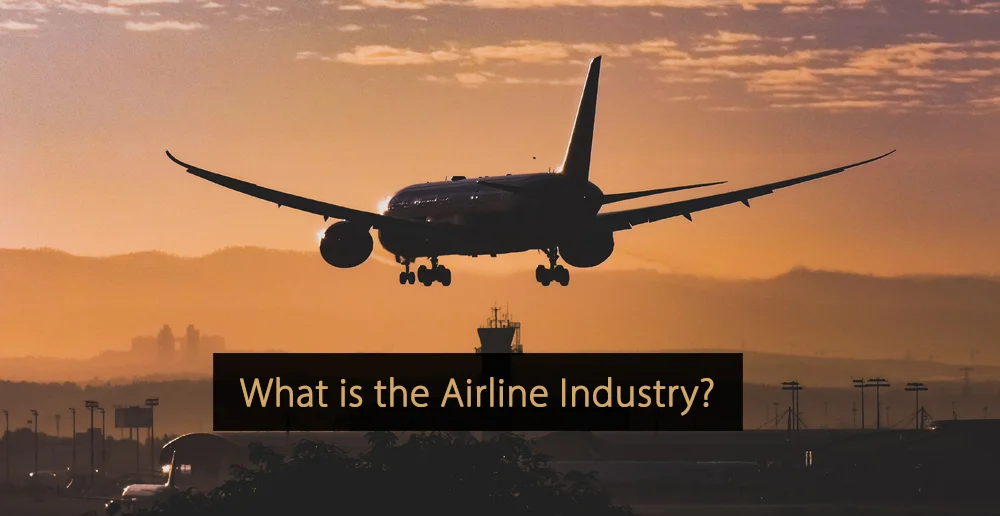
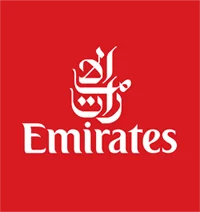
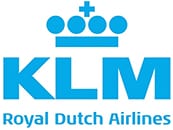

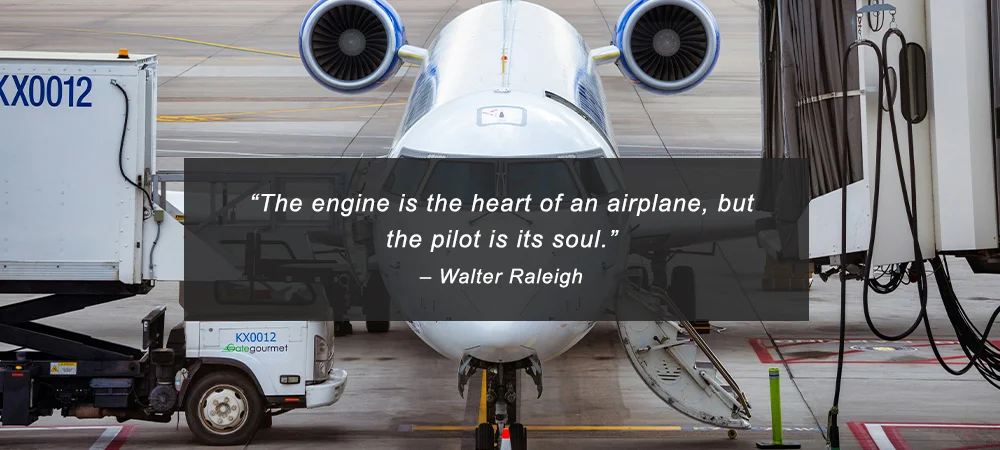






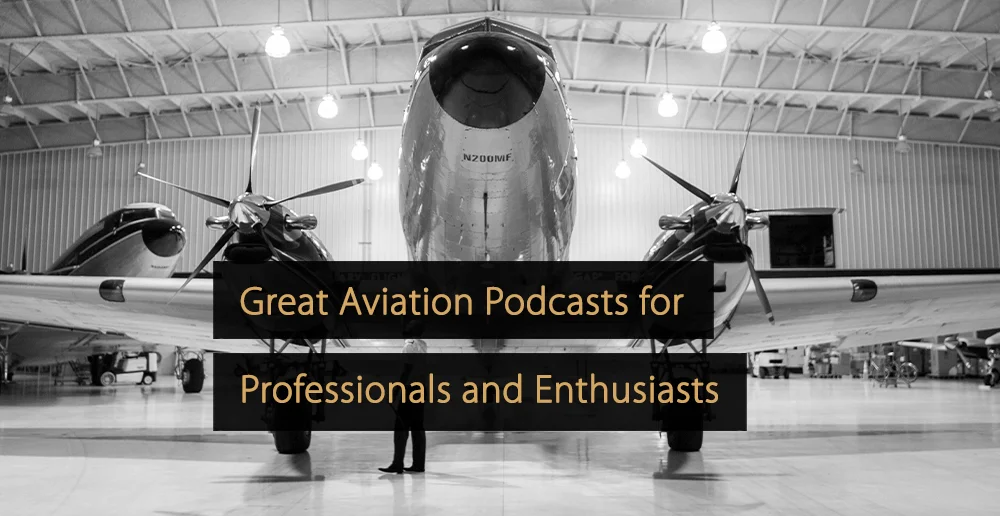

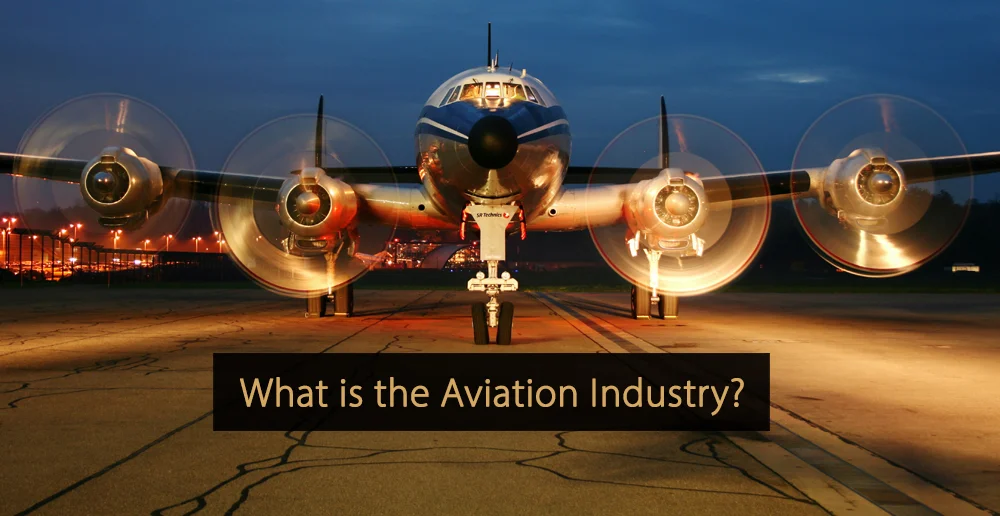
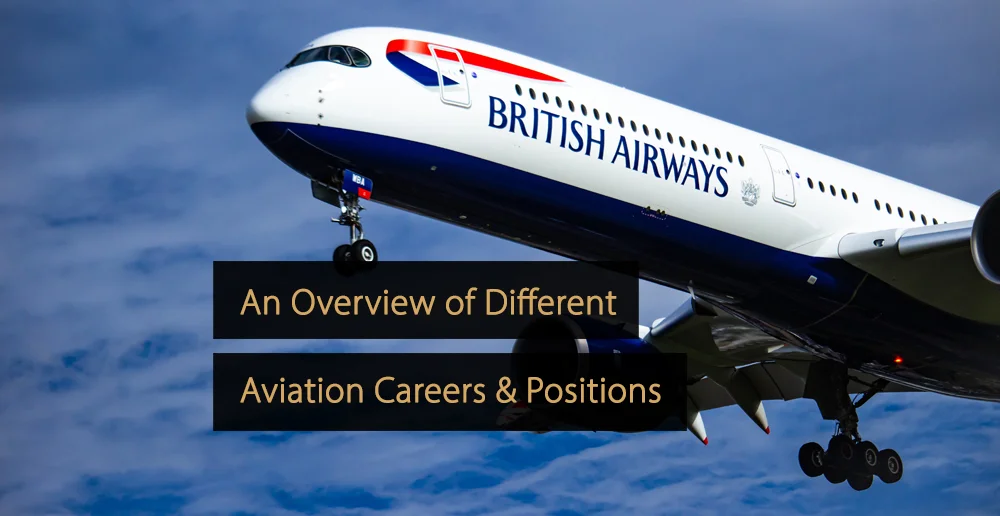

Thanks for sharing this blog. The airline industry encompasses a wide range of businesses that offer air transport services for paying leisure guests or business partners.
Yes! It’s such a pleasant feeling to finally realize that the airline industry is getting more accessible and affordable these days as the world gets ready to travel again. Thank you for the overview of all airlines. My uncle has one bucket list he wants to fulfil for his upcoming birthday next week: taking a ride on a Diamond 62. I’ll share this info with him so he can make a reservation really soon.
Thanks for the post. It was very helpful for those looking for information about the airline industry.
Thank you for the information.
The airline industry is constantly evolving, and this Revfine article provides a comprehensive overview of the industry’s current state. The article covers all topics of aviation.
Thank you for this fascinating read about the airline industry, very useful information.
Thank you for this comprehensive article about the airline industry. Great effort!
I really like this blog, good topic!
When was this writeup published?
The Revfine.com team has written the article. All articles are updated on a regular base.
The article on the airline industry provides valuable insights into this sector’s inner workings. It discusses the trends, challenges, and opportunities that exist in the industry. The article is helpful for anyone interested in understanding the airline industry.
Thank you Revfine.com for all the information!
I really enjoyed this article about the airline sector. Very comprehensive information.